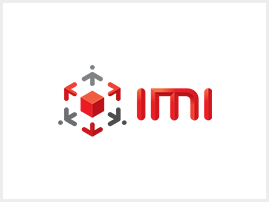The Process Involved in New Product Design and Development

April 28,2019,Philippines—The rapid development of cutting-edge technologies and the demands of consumers for smarter and more improved products are pressuring original equipment manufacturers or OEMs to create products that are more advanced, more innovative, and more efficient than the products already in the market. However, the competitiveness of the global manufacturing industry allows only a handful of products to reach and capture the hearts of the market despite the high demands for it.
To be successful, there is no other way than going through a systematic and customer-driven new product design and development process. Here is the general eight-step process of new product design and development designed for today’s global manufacturing.
Step #1: Idea Generation
The product design and development process starts with brainstorming or searching for innovative new product ideas with sources that may come from within and outside the company. Internal sources can be employees usually from the research and development, and market research teams, while external sources include customers, environment, and even competitors.
Perceptual mapping, benchmarking, and reverse engineering are some of the common ways to generate ideas.
Step #2: Idea Evaluation
After gathering new product ideas, the next step for product design and development would be screening and evaluating those ideas to see which ones should be dropped, and which ones can be profitable and be further developed.
Step #3: Research and Analysis
In order to further develop the product ideas, thorough research and analysis are necessary. Manufacturers need to consider specifications such as technical feasibility and market potential before producing a product, as well as investigate the core factors that may influence its design specifications and its benefits to the company.
Research and analysis will also help identify the process of manufacture, the cost and list of materials, equipment and technologies, and marketing strategies needed to produce and sell the product.
Step #4: Preliminary Product Design and Development
Aside from the purpose of having a product prototype to be used for pilot runs and testing, the preliminary product design and development process which will be the initial run of the manufacturing process is also beneficial in identifying which manufacturing aspects should be considered or not. This process will also include design simplification, standardization, and modularity.
Step #5: Pilot Runs and Testing
After creating a preliminary design, it is then necessary to test its feasibility to either confirm the predictions of the research and analysis process, or discover faults in the idea. Pilot runs and testing methods will help manufacturers know whether the product works well or if there are adjustments that needs to be made.
Step #6: Market Testing
One of the most crucial stages of the new product design and development process, it is now time for the product and its proposed marketing strategy to be tested in the real market. Through this, marketers will receive feedbacks from the actual market regarding its marketing strategy before doing a full introduction.
This can be done before or after the final product design and development stage, depending on when the manufacturing team deems it fit. Although, doing it before the final development stage would allow the manufacturers to modify the product according to the customer’s feedbacks.
Step #7: Final Product Design and Development
The final product development stage is done once the product design is finalized. The full-blown product manufacturing will start, and more workers will be needed to support the process. During or after manufacturing, products will also still need to undergo test runs and other testing methods to ensure their quality.
Step #8: New Product Introduction
The launch or commercialization of a new product into the marketplace, new product introduction is the last step to a successful product design and development project, and the start of the sales process. It includes production launch and ramp-up, creation of marketing materials and programme, supply chain development, sales channel development, service and support development, and more.
Although it can be usually transformed and adjusted depending on the nature of the project or the business, these are the general steps that manufacturers follow for new product design and development.
Other Blog


